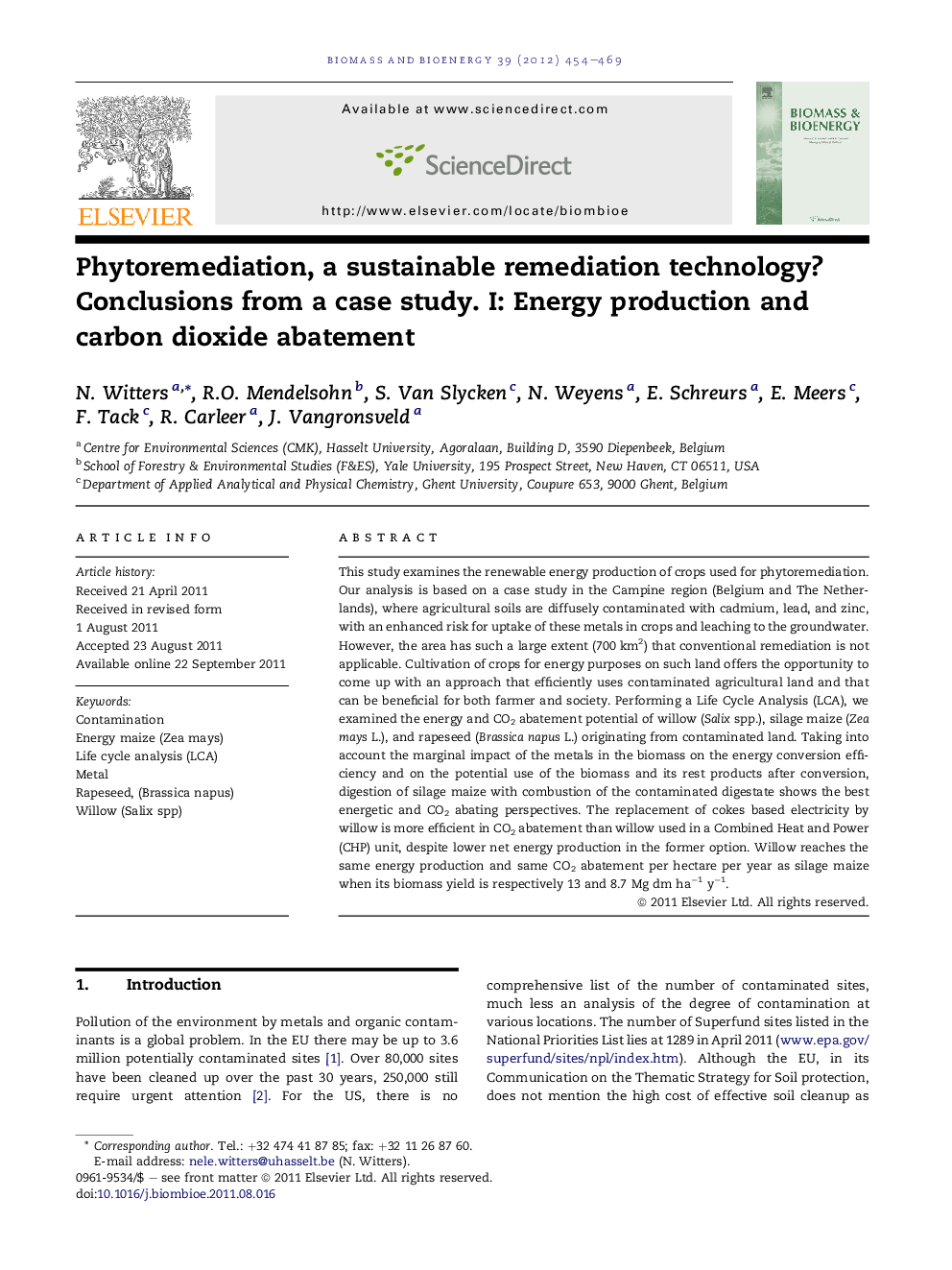| Article ID | Journal | Published Year | Pages | File Type |
|---|---|---|---|---|
| 677529 | Biomass and Bioenergy | 2012 | 16 Pages |
This study examines the renewable energy production of crops used for phytoremediation. Our analysis is based on a case study in the Campine region (Belgium and The Netherlands), where agricultural soils are diffusely contaminated with cadmium, lead, and zinc, with an enhanced risk for uptake of these metals in crops and leaching to the groundwater. However, the area has such a large extent (700 km2) that conventional remediation is not applicable. Cultivation of crops for energy purposes on such land offers the opportunity to come up with an approach that efficiently uses contaminated agricultural land and that can be beneficial for both farmer and society. Performing a Life Cycle Analysis (LCA), we examined the energy and CO2 abatement potential of willow (Salix spp.), silage maize (Zea mays L.), and rapeseed (Brassica napus L.) originating from contaminated land. Taking into account the marginal impact of the metals in the biomass on the energy conversion efficiency and on the potential use of the biomass and its rest products after conversion, digestion of silage maize with combustion of the contaminated digestate shows the best energetic and CO2 abating perspectives. The replacement of cokes based electricity by willow is more efficient in CO2 abatement than willow used in a Combined Heat and Power (CHP) unit, despite lower net energy production in the former option. Willow reaches the same energy production and same CO2 abatement per hectare per year as silage maize when its biomass yield is respectively 13 and 8.7 Mg dm ha−1 y−1.
► We study the energy potential of Salix, Zea mays and Brassica after phytoremediation. ► The case study contains agricultural soils that are contaminated with cadmium. ► We include the impact of metals on energy conversion efficiency and rest product use. ► Higher biomass yields for Salix would make it energetically competitive with Z. mays.
